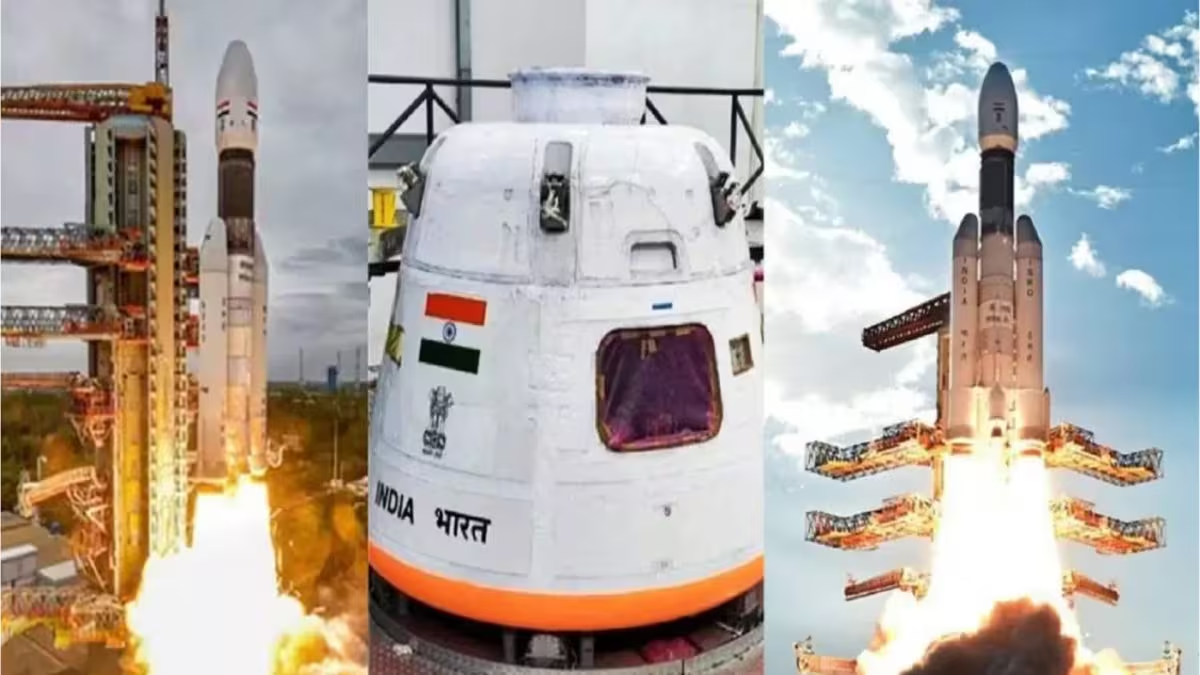
India’s Human Spaceflight Mileston
Shubhanshu Shukla and Axiom Mission 4 – A Leap toward Gaganyaan | CLAT Current Affairs 2026
GK & Current Affairs for CLAT | CLAT Current Affairs 2026
Powered by CLAT Gurukul – Best online coaching for CLAT
Why in News?
India marked a historic achievement in human space exploration when Group Captain Shubhanshu Shukla became the first Indian astronaut to live and work aboard the International Space Station (ISS). This was part of the Axiom Mission 4 (Ax-4)—a collaborative effort between NASA, Axiom Space, ISRO, and others.
This development holds immense importance for India’s Gaganyaan project, future collaborations in space diplomacy, and for legal questions related to space law, international cooperation, and scientific research rights—making it highly relevant for CLAT 2026 aspirants.
Introduction
India’s journey into human spaceflight has entered a decisive phase. On July 15, 2025, Axiom Mission 4 returned to Earth, concluding a crucial chapter in India’s space ambitions. Group Captain Shubhanshu Shukla, a trained astronaut and Indian Air Force officer, not only lived on the ISS but also conducted 60 microgravity experiments in space, a first for an Indian astronaut.
The mission holds value beyond symbolism. It provided insights into the biological, chemical, and behavioral effects of microgravity, and also gave India the much-needed human spaceflight experience required for the upcoming Gaganyaan mission in 2027.
From a legal and strategic perspective, the mission also represents India’s increasing role in international space cooperation and the evolution of global space law regimes.
Point-wise Summary
1. Axiom Mission 4 (Ax-4): Overview
- Launched on June 25, 2025, with astronauts from India, US, Hungary, and Poland.
- Returned to Earth on July 15, 2025.
- The mission was a symbolic return to space for these countries after decades.
2. India’s Historic Milestone
- Group Captain Shubhanshu Shukla became:
- The first Indian astronaut to live and work aboard the ISS.
- The second Indian in space after Rakesh Sharma’s 1984 mission.
- Accompanied by Group Captain Prasanth Balakrishnan Nair—both trained for Gaganyaan.
🔹 3. Importance for Indian Space Program
- The mission:
- Served as a launchpad for Gaganyaan.
- Provided live human spaceflight experience.
- Strengthened India’s international space partnerships.
4. Microgravity Research Conducted
- Over 60 experiments conducted aboard the ISS:
- Studied effects on crop yield (moong, fenugreek).
- Observed tardigrades, microorganisms that survive extreme environments.
- Analyzed muscle atrophy, metabolism, and eye movement in astronauts.
- Investigated human cognitive performance in space.
5. Educational and Outreach Initiatives
- Shukla connected with students in India during live sessions from space.
- Samples were sent back to Lucknow for further analysis by Indian scientists.
- Outreach aimed to popularize science education and promote STEM careers.
6. Microgravity and Its Impact
- Microgravity is not complete absence of gravity but free-fall conditions.
- Simulates conditions where matter behaves differently—used to:
- Study plant germination and fluid dynamics.
- Examine human cell growth, gene expression, and tissue formation.
🔹 7. Strategic and Global Collaboration
- The mission was an outcome of collaboration between:
- NASA
- Axiom Space
- European Space Agency (ESA)
- ISRO
- Boosted India’s image in international space cooperation.
8. Gaganyaan Mission: India’s Next Step
- Scheduled for 2027 with a planned crew of 3 astronauts.
- India to launch humans to Low Earth Orbit (LEO) (~400 km).
- A new Indian space station—Bharatiya Antariksh Station—is planned for 2035.
9. Relevance to Law and CLAT
- Raises legal and regulatory questions around:
- Ownership of space data.
- International agreements in outer space.
- Space liability in case of accidents aboard ISS or Indian missions.
- Relevant laws:
- Outer Space Treaty, 1967
- Indian Space Policy 2023
- Draft Space Activities Bill, India
10. Inspirational Impact
- The mission symbolizes:
- India’s arrival on the global human spaceflight stage.
- The potential for Indian youth to aspire toward space science.
- Encourages multidisciplinary learning, combining science, international relations, and law.
Notes: Explanation of Peculiar Terms
Term | Explanation |
Axiom Mission 4 (Ax-4) | A privately-led space mission to the ISS involving multiple nations including India. |
International Space Station (ISS) | A habitable satellite orbiting Earth used for global research collaboration. |
Microgravity | Condition of very low gravity experienced in orbit; simulates “weightlessness.” |
Gaganyaan | India’s first human spaceflight mission, led by ISRO. |
Tardigrades | Microorganisms known for extreme resilience, often studied in space biology. |
Low Earth Orbit (LEO) | Earth’s orbit at altitudes between 200–2,000 km, where ISS is located. |
Outer Space Treaty | A UN treaty regulating the use of outer space for peaceful purposes. |
Relevance for CLAT 2026 Aspirants
Legal Reasoning
- Questions may involve:
- Space law treaties and India’s obligations.
- Ownership of scientific data in shared missions.
- Liability under international law for astronaut safety.
Current Affairs
- CLAT 2026 may ask:
- India’s achievements in space.
- Differences between missions like Gaganyaan and Ax-4.
- The role of ISRO in global partnerships.
Science & Tech Legal GK
- Understand:
- ISRO’s role in diplomacy.
- Private vs public actors in space missions.
- Rights and responsibilities under space treaties.
Conclusion
India’s successful participation in Axiom Mission 4, through Group Captain Shubhanshu Shukla, is not only a scientific milestone but also a geostrategic achievement. It sets the tone for Gaganyaan, space-based diplomacy, and legal frameworks that govern space exploration.
CLAT 2026 aspirants must view this mission through a multidisciplinary lens: combining legal, scientific, and international cooperation insights to prepare for passage-based and current affairs questions.
This Blog is Powered by CLAT Gurukul — India’s Leading Law Entrance Prep Platform
At CLAT Gurukul, we believe in empowering future legal minds with the right blend of knowledge, strategy, and mentorship. This blog is a reflection of our commitment to quality content that not only helps aspirants stay updated but also sharpens their conceptual clarity.
Why CLAT Gurukul?
- Personalized Mentorship by Top Legal Educators
- Comprehensive Study Materials & Legal Updates
- Daily Practice Sets, Mocks & Performance Tracking
- Result-Oriented Strategy for CLAT, AILET, and CUET
Whether you’re reading this article to deepen your understanding or to stay ahead in your exam prep — you’re already one step closer with CLAT Gurukul by your side.
Join thousands of successful aspirants who trusted CLAT Gurukul and cracked India’s top law entrance exams.
Visit https://www.youtube.com/@CLATGurukul/shorts to learn more or speak to our experts now!
Note from CLAT Gurukul
At CLAT Gurukul, we are committed to providing free CLAT study material, including CLAT current affairs, legal reasoning practice sets, general knowledge updates, logical reasoning questions, English comprehension exercises, and more — all curated by top mentors.
Our blog section is regularly updated with high-quality CLAT content tailored to match the evolving pattern of the CLAT UG exam. Whether you’re looking for CLAT 2026 current affairs, CLAT legal reasoning passages, or mock practice sets, we have you covered.
We believe in open-access learning and will continue to publish free CLAT preparation resources to help serious aspirants succeed.
Explore more free content under categories like:
Best online coaching for CLAT, CLAT current affairs, CLAT GK updates, CLAT legal updates, CLAT logical reasoning, and CLAT English preparation.
For structured learning, daily mocks, and expert mentorship, visit https://www.youtube.com/@CLATGurukul/shorts — the Best CLAT Coaching in Patna and India’s most trusted platform for CLAT online coaching.




